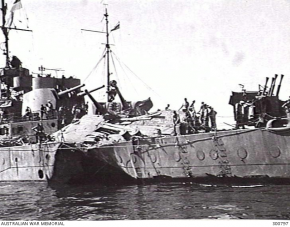If total government spending (again including Defence) gets too high this will inevitably impede economic growth in an advanced economy and impact our ability to service debt and raise taxes. Measuring spending (and debt) against GDP is a typical metric of the robustness of a government’s balance sheet for this reason.
Not always, it can be used as a kind of stimulus. Pumping money around the economy, to improve confidence, employment, driving productivity, increasing the size of the economy in real terms.
Admittedly some does this more than others. a MOTS purchase of overseas gear doesn't have the same local stimulus as say building a ship, with Australian steel, with Australian workers, fitted with Australian systems, supplied by Australian suppliers. Some expenditures are dual use, infrastructure/military expenditure. Telecommunications cables, satellites, housing etc. Many of Australian industries are dual use. Civmec is an example. Encourage capability in one sector can benefit multiple sectors. Truck and bus construction and IFV production have overlap, so strengthening one can help the other find economies and efficiencies.
Defence has been a key source of pilots which has fueled the Australian aviation industry. The aviation industry fuels tourism. It isn't always a zero sum game.
There are plenty of damaging things that can happen to limit spending to GDP. Like the time we slowed down Hobart class constructions, with delayed the project 18-24 months additional, and deliberately make it cost nearly a billion dollars more, just to lower yearly expenses. This is exactly the type of destructive behavior decoupling defence from GDP is hoping to stop.
Plenty of high growth economies spend significant money on defence. Singapore, the US, China, etc. Plenty of high HDI countries spend big on defence, Norway, Singapore, Switzerland, UK, France, Korea, Israel.
The idea that there is only a limited bucket with so much money isn't correct. It isn't a choice between having an economy and have a proper defence force, or funding education or defence, or health and defence. A well managed, healthy, economy can "do it all" within broad limitations.
European countries often seek mutual offsets, we buy planes from you, you buy helicopters from us. Having a defence industry enables deals like this. This really does more in terms of making the money go further. While it can be very restricting regarding platform selection, it can certainly show defence dollars aren't just generic dollars.
Historically Australia is probably more of a 2.5% of GDP country. We aren't Belgium, we administer ~25% of the earths surface.

www.theguardian.com


